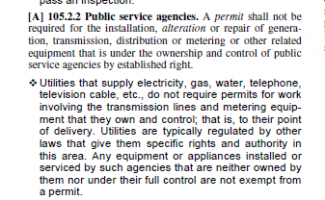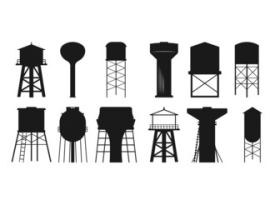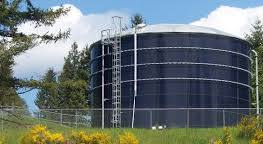Sifu
SAWHORSE
- Joined
- Sep 3, 2011
- Messages
- 3,454
Should a permit be required or accepted for a utility owned water tower? I can find no applicable code or reference other than this:

"Public Service Agency" is a little grey, but I would think a municipal water supply would be considered one.
This is a stand-alone, 170', 1.5 million gallon structure, not a roof-top structure.

"Public Service Agency" is a little grey, but I would think a municipal water supply would be considered one.
This is a stand-alone, 170', 1.5 million gallon structure, not a roof-top structure.


